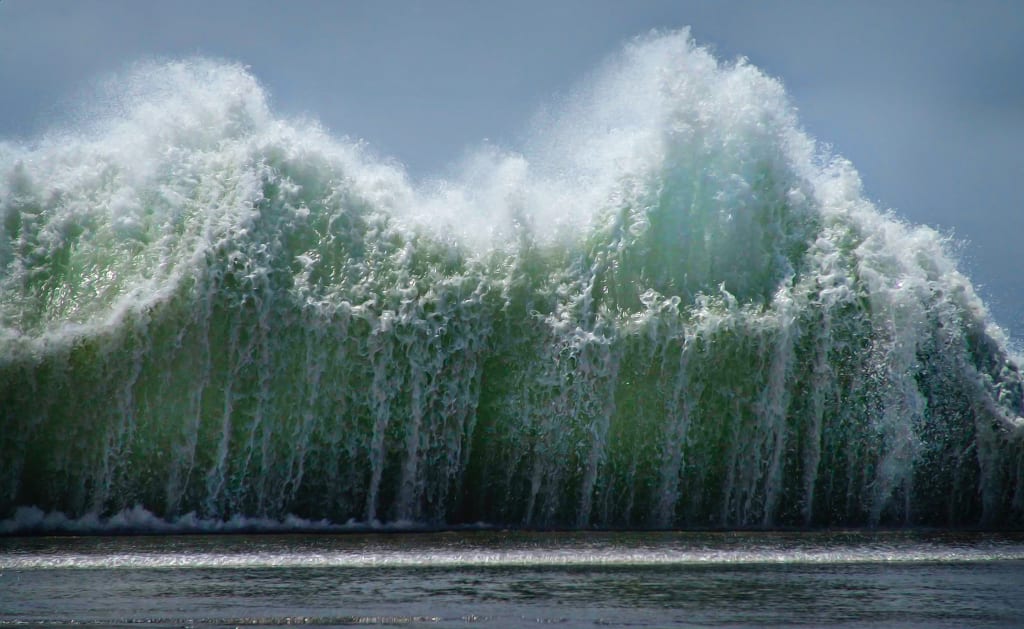
Picture this: you're lounging on a beautiful beach, not a care in the world. The sun is bronzing your skin and the sand is trickling between your toes. You're completely relaxed, until you notice something strange. The water is disappearing! Suddenly, you realize that you're in the path of a tsunami. In just a matter of minutes, you could be underwater. But don't panic! There are steps you can take to survive this deadly natural disaster.
Tsunamis are triggered by intense underwater activity, such as an earthquake or an underwater volcanic eruption. These events displace huge volumes of water, pushing it up from the ocean floor to its surface. When gravity pulls it back down, all this built-up energy is released outwards, forming deadly waves that grow stronger as they ripple across the ocean. These waves can be up to 100 kilometers long and sometimes taller than 30 meters. They can travel across whole oceans, moving at the speed of a jet airplane. With such speed, strength, and stamina, how does anyone stand a chance?
Even in a tsunami hazard zone, you can still survive if you know what to do. The first step to survival is to be able to identify the early signs of a tsunami. The Pacific Ocean is home to volatile tectonic activity, which explains why 75% of the world's volcanic eruptions and 90% of the world's earthquakes occur in the Pacific. These geological disturbances are the reason why 85% of all tsunamis happen in the Pacific Ocean.
In most cases, an earthquake comes before a tsunami. If you're near the coast and you experience an earthquake, protect yourself from that first. But once the shaking stops, move to higher ground as quickly as possible. The beach will grow bigger, so run the other way. An early sign of an impending tsunami is that the water along the coast will recede, pulling back and exposing the seafloor. Do not go to the beach to investigate. You'll only be putting yourself at risk. Instead, head in the opposite direction and try to get as far as three and a half kilometers from the ocean or 30 meters above sea level to ensure your safety. Get to the highest elevation possible.
Tsunamis travel quickly, and you may not have enough time to clear the hazard zone. In this case, look for a tall building with a sturdy concrete foundation. If you see one nearby, run inside and get to the roof as quickly as possible. If you can't make it to a building in time, your best bet is to grab onto something and hold on. In the 2004 Indian Ocean tsunami, an Indonesian woman was finally rescued after holding onto a palm tree for five days straight. While it isn't ideal, if you can't get to higher ground in time, you need to find something to hold onto. As the tsunami moves inland, it will sweep tons of debris along with it. This can be very dangerous, as the accumulation of debris traveling at high speeds becomes fatal obstacles for anyone who's caught in the current. However, many tsunami victims have been saved by climbing onto detached roofs or holding on tightly to floating cars or other large objects.
Of course, if you've made it this far, your troubles aren't over yet. A tsunami isn't one wave, but a series of waves known as a tsunami wave train. Waves may be anywhere from five minutes apart to an hour apart, and be aware that the first wave that hits isn't always the strongest. So even when you think it's over, stay where you're safe until you hear from local officials.
It goes without saying that tsunamis are terrifying. When a 30-meter wave is hurtling towards you at 800 kilometers per hour, you're probably feeling pretty helpless. But have faith in science, trust empirical research, and you'll see there's always a way out.





Comments
There are no comments for this story
Be the first to respond and start the conversation.